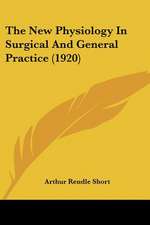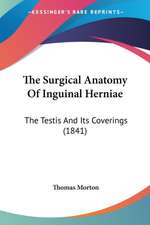Fetal Growth Retardation: Diagnosis and Treatment
Autor Asim Kurjak, J.M. Beazleyen Limba Engleză Hardback – 30 iun 1989
Topics Include:
| Toate formatele și edițiile | Preț | Express |
|---|---|---|
| Paperback (1) | 303.00 lei 3-5 săpt. | +21.53 lei 6-12 zile |
| CRC Press – 26 noi 2019 | 303.00 lei 3-5 săpt. | +21.53 lei 6-12 zile |
| Hardback (1) | 1417.59 lei 6-8 săpt. | |
| CRC Press – 30 iun 1989 | 1417.59 lei 6-8 săpt. |
Preț: 1417.59 lei
Preț vechi: 1492.21 lei
-5% Nou
Puncte Express: 2126
Preț estimativ în valută:
271.26€ • 290.07$ • 226.17£
271.26€ • 290.07$ • 226.17£
Carte tipărită la comandă
Livrare economică 17 aprilie-01 mai
Preluare comenzi: 021 569.72.76
Specificații
ISBN-13: 9780849347658
ISBN-10: 0849347653
Pagini: 224
Dimensiuni: 178 x 254 x 17 mm
Greutate: 0.61 kg
Ediția:1
Editura: CRC Press
Colecția CRC Press
ISBN-10: 0849347653
Pagini: 224
Dimensiuni: 178 x 254 x 17 mm
Greutate: 0.61 kg
Ediția:1
Editura: CRC Press
Colecția CRC Press
Public țintă
Professional and Professional ReferenceCuprins
1. The Epidemiology and Etiology of Intrauterine Growth Retardation 2. Epidemiology of Fetal Growth Retardation in Developed Countries 3. The Pathophysiology of Intrauterine Growth Retardation 4. Collagen Diseases and Intrauterine Growth Retardation 5. Obstetric Management of Intrauterine Growth Retardation 6. The Creation of a Perinatal Growth Chart for International Reference 7. Ultrasound in Detection of Growth Retarded Fetuses 8. Ultrasound Guided Procedures in Small-for-Gestation Fetuses 9. Utero-Placental and Fetal Circulation in Intrauterine Growth Retardation 10. The Use of Magnetic Resonance Imaging in Intrauterine Growth Retardation 11. Low Birthweight and Fetal Growth Retardation: Some Preventable Aspects 12. Prevention of Intrauterine Growth Retardation by Magnesium Substitution in Pregnancy 13. Long-Term Glucose Infusions in the Treatment of Fetal Growth Retardation 14. Postnatal Sequelae of Fetal Growth Retardation
Descriere
This book places emphasis on tests necessary to evaluate fetal well-being and to detect those fetuses at risk of hypoxia and acidosis in utero. It is useful for obstetricians, pediatricians, pathologists, geneticists, and hospital and scientific personnels.













